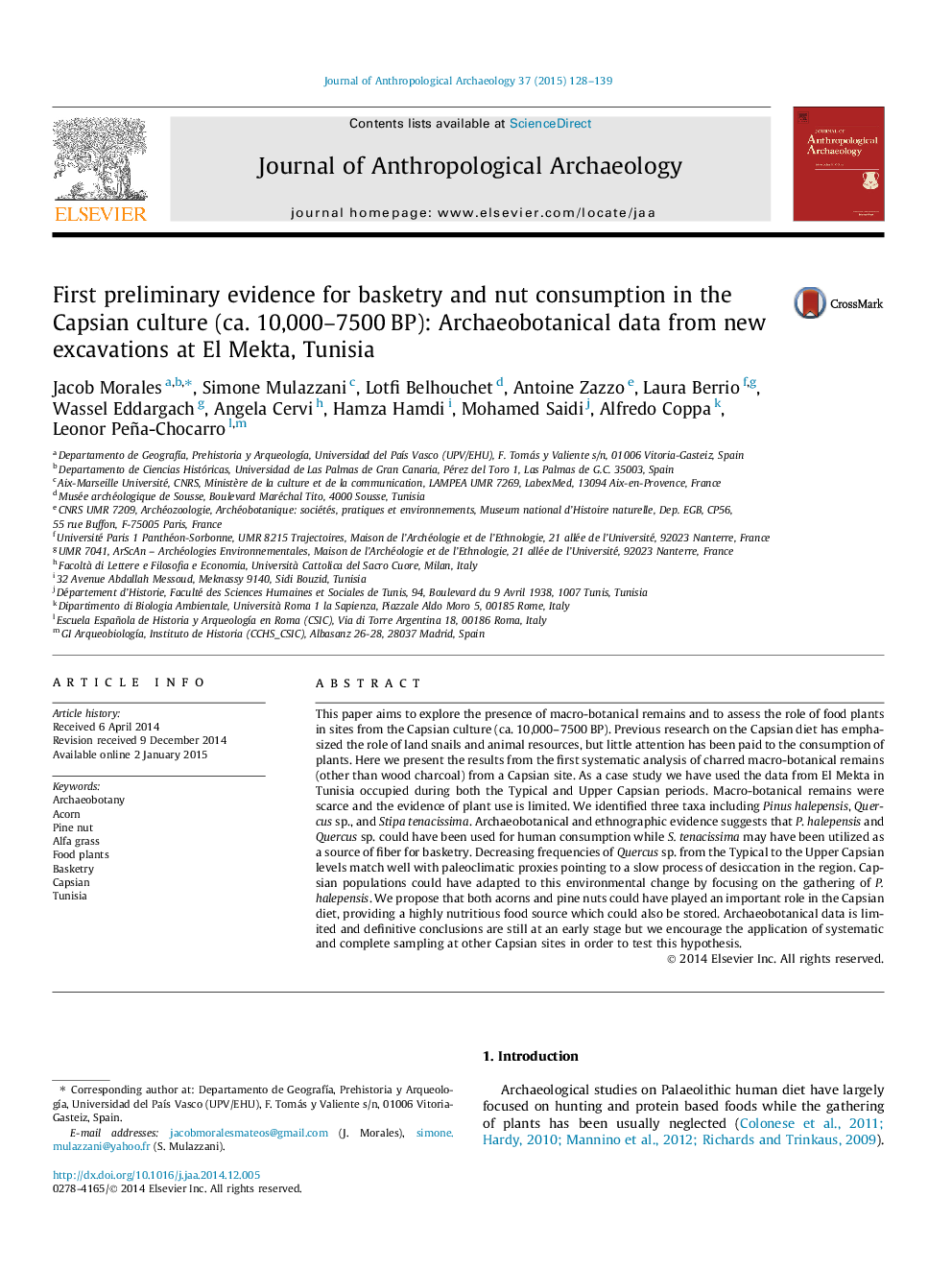| کد مقاله | کد نشریه | سال انتشار | مقاله انگلیسی | نسخه تمام متن |
|---|---|---|---|---|
| 1034900 | 1483853 | 2015 | 12 صفحه PDF | دانلود رایگان |
• We examine charred plant remains from El Mekta, Tunisia (ca. 9500–7500 BP).
• We identified three taxa including Pinus halepensis, Quercus sp., and Stipa tenacissima.
• We use ethnobotanical data to interpret archaeological plant remains.
• Acorns and pine nuts could be used as staples, and Alfa grass in basketry.
• Decreasing of acorns through time suggests climatic deterioration in the area.
This paper aims to explore the presence of macro-botanical remains and to assess the role of food plants in sites from the Capsian culture (ca. 10,000–7500 BP). Previous research on the Capsian diet has emphasized the role of land snails and animal resources, but little attention has been paid to the consumption of plants. Here we present the results from the first systematic analysis of charred macro-botanical remains (other than wood charcoal) from a Capsian site. As a case study we have used the data from El Mekta in Tunisia occupied during both the Typical and Upper Capsian periods. Macro-botanical remains were scarce and the evidence of plant use is limited. We identified three taxa including Pinus halepensis, Quercus sp., and Stipa tenacissima. Archaeobotanical and ethnographic evidence suggests that P. halepensis and Quercus sp. could have been used for human consumption while S. tenacissima may have been utilized as a source of fiber for basketry. Decreasing frequencies of Quercus sp. from the Typical to the Upper Capsian levels match well with paleoclimatic proxies pointing to a slow process of desiccation in the region. Capsian populations could have adapted to this environmental change by focusing on the gathering of P. halepensis. We propose that both acorns and pine nuts could have played an important role in the Capsian diet, providing a highly nutritious food source which could also be stored. Archaeobotanical data is limited and definitive conclusions are still at an early stage but we encourage the application of systematic and complete sampling at other Capsian sites in order to test this hypothesis.
Figure optionsDownload high-quality image (88 K)Download as PowerPoint slide
Journal: Journal of Anthropological Archaeology - Volume 37, March 2015, Pages 128–139
